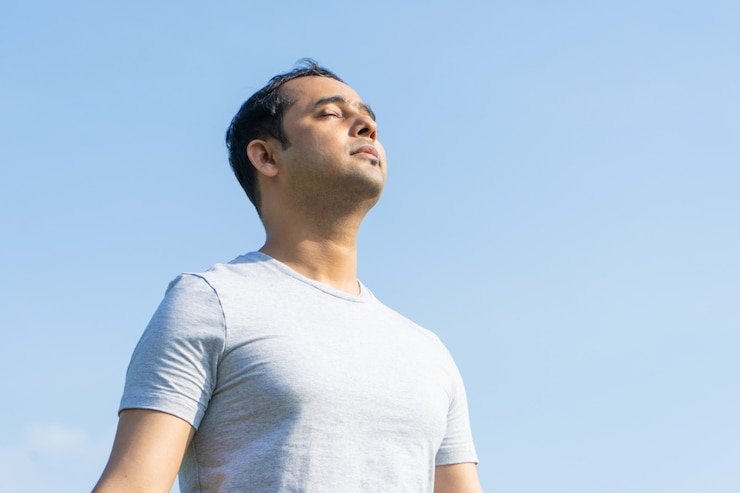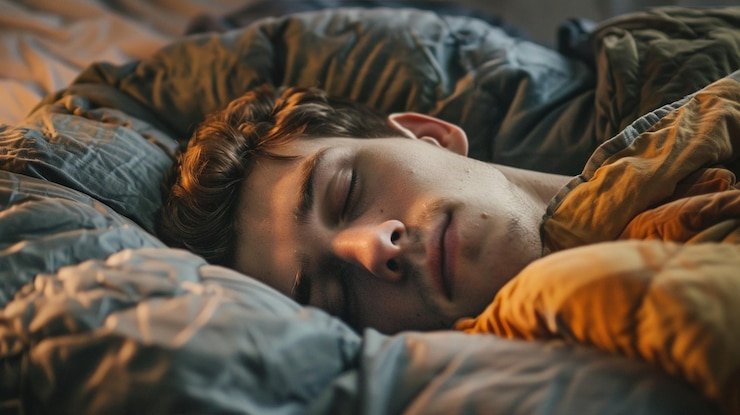Anxiety can trap us in a cycle of racing thoughts, physical tension, and difficulty breathing normally. In the midst of this mental chaos, learning to breathe consciously can become a powerful tool. Through Breathing exercises for anxiety, Simple yet effective, it is possible to reduce stress, regain emotional balance, and return your body to a state of calm.
In this article, you will discover breathing techniques backed by science that you can apply at any time of the day to naturally control anxiety symptoms without medication.

Abdominal or diaphragmatic breathing
What does it consist of?
It is a technique that teaches you to breathe deeply from the abdomen, rather than the chest. It helps relax the body, improve oxygenation, and reduce hyperventilation.
How to do it:
Sit or lie down in a comfortable place.
Place one hand on your chest and the other on your abdomen.
Inhale slowly through your nose for 4 seconds, making sure only your abdomen rises.
Hold your breath for 2 seconds.
Exhale through your mouth for 6 seconds.
Repeat for 5 to 10 minutes.
4-7-8 Breathing
It is a simple technique developed by Dr. Andrew Weil. It helps induce a state of almost immediate calm, ideal for moments of acute anxiety or to relax before sleep.
Instructions:
Inhale through your nose for 4 seconds.
Hold your breath for 7 seconds.
Exhale slowly through your mouth for 8 seconds.
Repeat for 4 to 8 cycles.
Cyclic Sighing

A technique recently studied by Stanford University. It consists of a double inhalation followed by a prolonged exhalation. It has been shown to improve mood and reduce anxiety in just 5 minutes a day.
How to practice it:
Inhale deeply through your nose.
Take a second quick and short inhalation right after.
Exhale slowly and completely through your mouth.
Repeat for 5 minutes.
How often should I practice these breathing exercises for anxiety?
Although you can use them in moments of acute anxiety, it is recommended to include at least one of these exercises in your daily routine. Practicing for 5 to 10 minutes a day can lead to profound changes in your emotional well-being and how your body responds to stress.
Conclusion of Breathing Exercises for Anxiety
Breathing exercises are an accessible, free, and scientifically supported tool for managing anxiety. Whether you choose to breathe deeply from the abdomen, try the 4-7-8, or practice cyclic sighing, the important thing is to make it a habit. Your mind and body will thank you.
What is the best breathing exercise for anxiety?
The best exercise depends on the person and the situation. However, the 4-7-8 breathing technique is highly recommended for its ability to induce a quick sense of calm. This exercise, developed by Dr. Andrew Weil, is especially effective in reducing stress and anxiety during moments of high tension. It consists of inhaling for 4 seconds, holding the breath for 7 seconds, and exhaling slowly for 8 seconds.
How long should I practice conscious breathing each day?
Ideally, you should practice for 5 to 10 minutes a day. Even a brief daily practice can have a great impact on reducing anxiety and stress. You can start with shorter sessions and increase the time as you get used to the technique. The key is consistency, not extreme duration.
Do breathing exercises work during anxiety attacks?
Yes, breathing exercises can be very effective in mitigating the symptoms of an anxiety attack. Techniques such as the 4-7-8 breathing or cyclic sighing help reduce heart rate and activate the parasympathetic nervous system, which promotes relaxation during moments of high anxiety. These exercises provide immediate relief and help regain control.
Can I combine these exercises with meditation?
Absolutely, in fact, combining conscious breathing with meditation can be very powerful. Deep breathing helps center the mind, which makes meditation easier. Practicing both techniques together allows for greater relaxation, better concentration, and a more effective reduction of anxiety. It is recommended to do breathing exercises before meditation to prepare the body and mind.
Do breathing techniques have side effects?
Breathing techniques, when practiced correctly, have no negative side effects. However, if you do them incorrectly or too quickly, you may feel dizzy or uncomfortable. It’s important to practice calmly and in a comfortable environment. If you have any medical conditions such as severe respiratory problems, it’s recommended to consult a doctor before performing certain breathing techniques.

Trusted outbound links:
NHS – Breathing techniques for anxiety
- Link: NHS – How breathing can help you with anxiety
- Suggested anchor text: "Discover how the breathing techniques recommended by the NHS can help you effectively reduce anxiety."
Verywell Mind – Deep breathing for anxiety and stress
- Link: Verywell Mind – Deep breathing for anxiety and stress
- Suggested anchor text: «Learn about the deep breathing techniques that, according to Verywell Mind, can be effective for managing anxiety and stress.»
Mayo Clinic – Breathing techniques to reduce stress
- Link: Mayo Clinic – Breathing techniques to reduce stress
- Suggested anchor text: «Explore how the breathing techniques recommended by Mayo Clinic can help you reduce stress and improve your well-being.»
We recommend our healthy recipes website / Cooking Manual
You might also like: How to sleep well without pills: natural strategies that work


